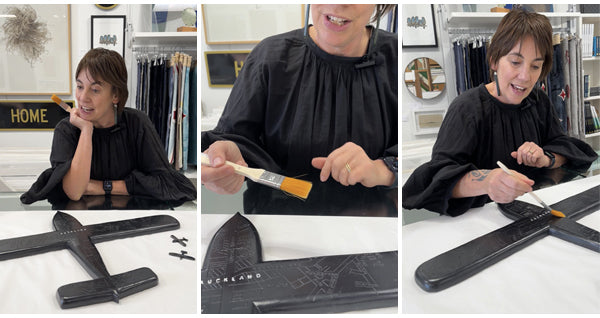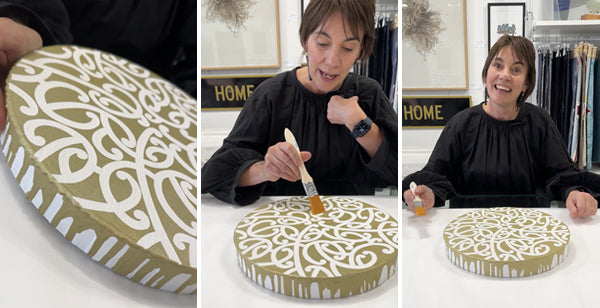Do you sometimes wonder about the best way to take care of your artwork? Melanie-Jane has a few tips on the best practises she uses to keep artwork clean and maintained in this handy guide to spring cleaning framed pieces, sculptural works and glass art.
To clean and maintain any hung artwork, we suggest you first remove it from the wall and place it on a flat surface.
HOW TO CLEAN FRAMED ARTWORK

Use any glass cleaner that does not contain ammonia and always spray onto the cloth, NOT the glass.
Carefully clean the glass front, then gently wipe over the frame.

HOW TO CLEAN SCULPTURAL WORKS
Our first example is a Michele Bryant resin plane that has maps etched into the surface, creating a relief surface with a fabulous textural quality.

We suggest you maintain these works annually using a clean, dry paintbrush. Do not use anything that might be abrasive to the artwork.
Gently go over all of the etched areas, brushing away any dust or grit.
Alternatively, you can use a purpose-made glass cleaning cloth to gently clean etched works.
The second sculptural example shown below is an original artwork by Hikurangi Edwards. Hikurangi’s piece has been created with around 40 layers of paint that she then carves into, revealing the colours below.

For the carved piece, once again we suggest using a clean, dry paintbrush that you reserve for this purpose.
Simply trace along the lines of the artwork with the brush, brushing away dust and debris that may have collected.
HOW TO CLEAN GLASS ART
Cleaning glass can be a little intimidating, but just take the piece to a clean, flat surface for the best way to keep you and the piece safe.

Use s clean, soft cloth such as microfibre or other lint-free cloth.
Using glass cleaner, spray onto the cloth, NOT the glass.
Wipe over the piece gently and thoroughly to remove dust.
Place the piece back into its spot, then carefully wipe again to remove any fingerprints you may have left behind.




